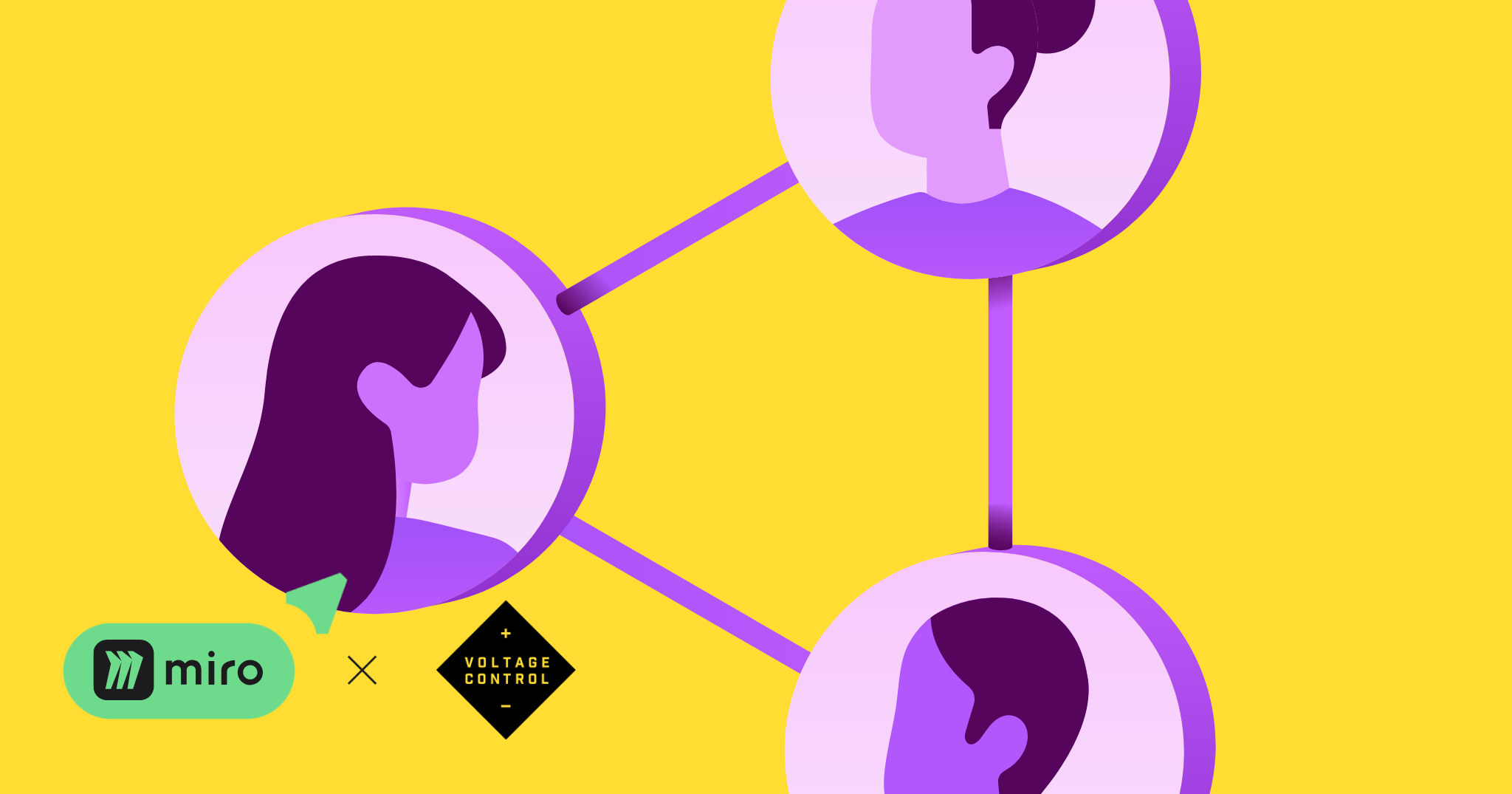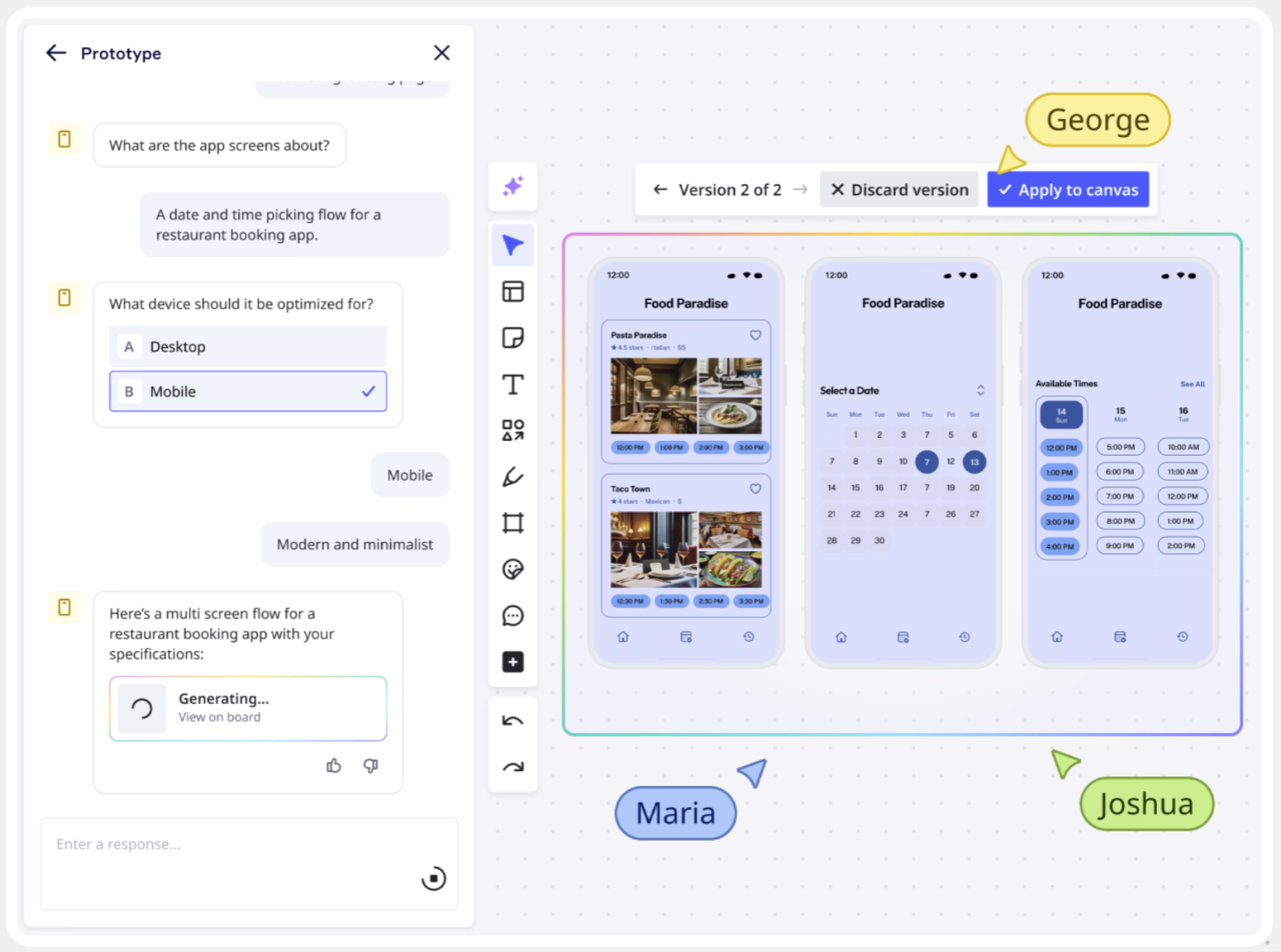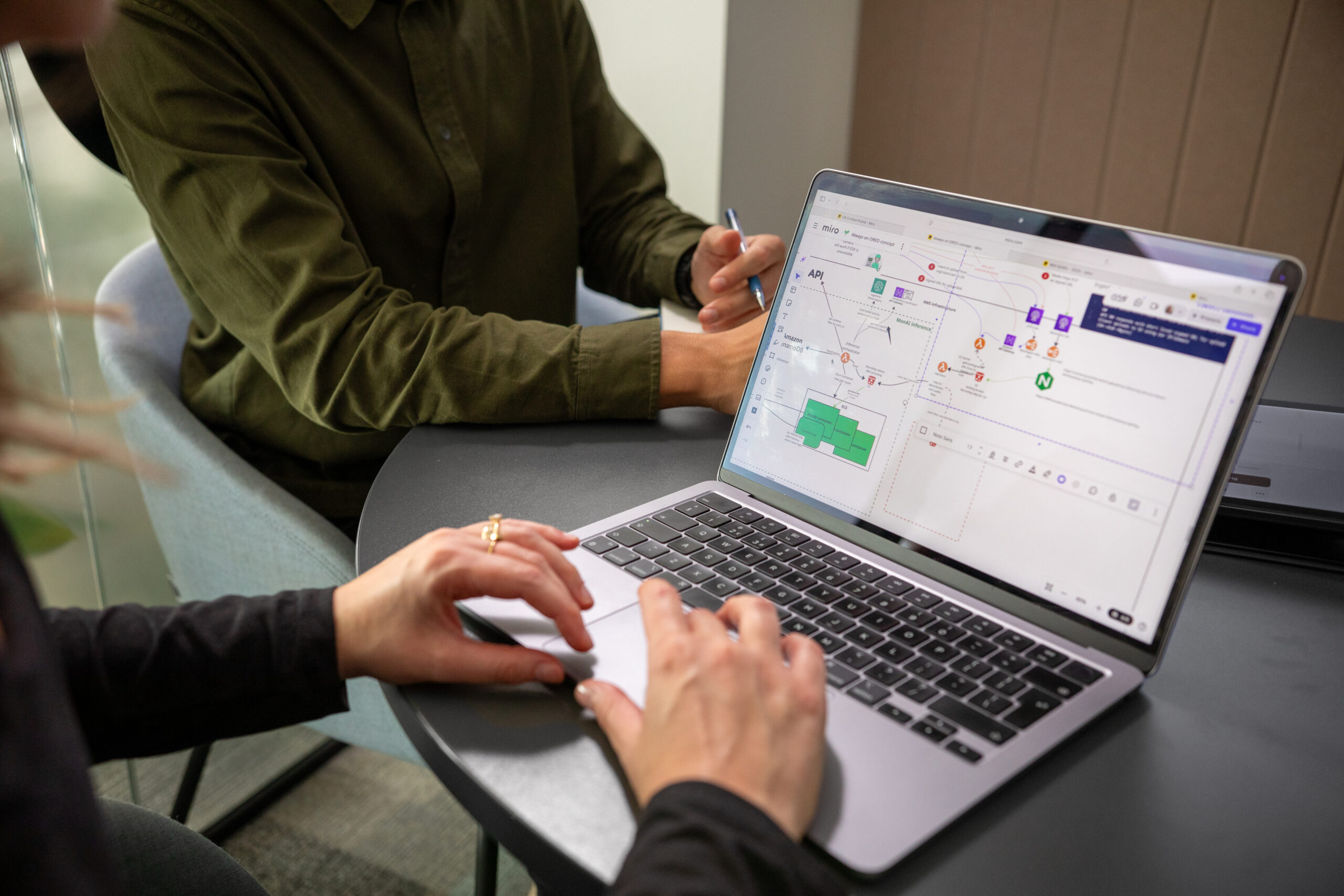When Miro’s new AI Flows and Sidekicks features began to take shape, Voltage Control — a long-time Miro Solutions Partner and facilitation academy based in Austin, Texas — saw an opportunity to explore something bigger than functionality.
“We wanted to understand how these capabilities could change the way teams think together. For us, it was never just about what AI could do — it was about what humans could do with it.”
Douglas Ferguson, Founder & CEO of Voltage Control
That curiosity sparked a deep collaboration between Miro’s Product and Customer Marketing teams and Voltage Control’s facilitation experts. Together, we prototyped, tested, and refined early examples of what collaborative AI can look like when facilitation principles guide design.
The result: a growing library of templates, AI workflows, and in-board AI teammates that help teams visualize ideas, challenge assumptions, and make smarter decisions faster — and together.
From concept to collaboration: imagining AI as a teammate
At SXSW 2024, Douglas and his team led a workshop titled AI Teammates: Facilitating Human Connection in the AI Era. The session introduced a then-hypothetical idea: AI teaming, which is treating AI as a participant in collaboration, not just a productivity tool.
Participants worked alongside simulated “AI teammates,” each embodying a facilitative mindset — The Challenger, The Synthesizer, The Optimist, and more — to explore creative tension, inclusion, and ethical AI use.
“The energy in that room told us something,” Ferguson recalls. “People don’t just want faster work; they want smarter, more inclusive teamwork. They want AI that listens, not just generates.”
At the time, that idea only existed in our imaginations. But Miro’s release of Flows and Sidekicks made that vision a reality — transforming facilitation principles into living, interactive patterns inside Miro’s AI canvas.
Turning imagination into interaction
As part of Miro’s early creator program, Voltage Control began building prototypes with the beta versions of Flows and Sidekicks. What started as sketches evolved into three connected tools, each designed to bring facilitation patterns to life within Miro.
1. Instant Prototyping (Powered by Flows)
The Instant Prototyping Flow helps teams move from insight to artifact — and from artifact to decision — in minutes.
Teams upload a brief or product challenge, attach research documents, and run a single Flow that transforms those inputs into a connected set of outputs:
Research Insights → User Flows → Screen Outlines → Prototype Scaffold
Teams can instantly visualize an idea and make decisions based on something tangible.
“We always talk about speed plus direction equals velocity. You can generate faster, but what matters is whether everyone’s pointed the same way. Flows let you visualize that direction in real time.”
Douglas Ferguson, Founder & CEO of Voltage Control

2. AI Teammates as Miro Sidekicks
The SXSW personas came to life as Miro Sidekicks — conversational AI teammates that can join a board at any moment.
Each Sidekick represents a different facilitation mindset:
- The Challenger surfaces risks and questions assumptions.
- The Synthesizer connects scattered ideas into clear insights.
- The Historian recalls context and past learnings.
- The Optimist reframes constraints as opportunities.
- The Sketcher creates alignment by visualizing ideas
- The Co-Faclitator protects inclusion and prompts reflection.
When used intentionally, these Sidekicks improve decision quality, inclusion, and cognitive diversity.
“You can literally ask the Challenger to play devil’s advocate,” Ferguson explains. “It gives the group permission to explore dissent safely. That’s facilitation at its best.”
3. Utility Sidekicks for facilitators
Beyond the cognitive partners, Voltage Control designed a suite of Utility Sidekicks — small, purpose-built helpers that keep workshops running smoothly.
These include:
- Activity Matcher suggests the right move for the moment.
- Action Planner turns discussion into clear actions.
- Idea Generator offers creative prompts when energy dips.
- Idea Remixer mixes and recombines ideas to spark novelty.
- Board Butler aligns and tidies frames for readability.
- Retro Runner assist with closing group reflections
Together, these digital helpers remove logistical friction so facilitators can focus on tone, inclusion, and momentum — the human side of collaboration.
What we discovered along the way
As the Voltage Control team prototyped and tested these tools, several facilitation-inspired design patterns emerged — lessons that apply to anyone designing or adopting AI for collaboration.
- Seed it before you need it: Introduce AI elements at the start of a session. When participants understand how and why they’ll use them, engagement and trust increase.
- Preserve before regenerating: Encourage teams to save outputs before re-running Flows. Keeping versions visible supports learning and transparency.
- Facilitate decision moments: Every AI output should prompt a conversation, not conclude it. Inspect, adapt, and align — turning automation into shared understanding.
- Design for edge cases: Even “AI quirks” can be teaching moments. When diagrams misbehaved or shapes extended beyond frames, they used those surprises to discuss clarity, intent, and assumptions.
“We realized that even when the AI misbehaved, it invited dialogue. Someone would ask, ‘Why did it do that?’ and suddenly we were facilitating learning. That’s the heart of collaboration.”
Douglas Ferguson, Founder & CEO of Voltage Control
Responsible AI in action
Throughout the process, Voltage Control prioritized responsible, transparent use of AI.
When introducing Sidekicks, facilitators prompt participants to agree on how AI will be used and interpreted. They explain that Sidekicks aren’t decision-makers — they’re conversation catalysts — and that people always guide reflection and context.
This “responsible by design” approach mirrors Miro’s broader commitment to collaborative intelligence: AI that strengthens participation rather than replacing it.

From experiments to patterns
After months of iteration, Voltage Control organized their creations into a dedicated Miro AI Collection — a curated library of templates and Sidekicks that demonstrate new collaborative patterns.
The collection includes:
- Instant Prototyping (Flow): from idea to prototype in one click
- AI Teammates (Sidekicks): six personas for cognitive diversity
- Facilitator Utilities: six helpers for smoother sessions
Each template includes facilitation guidance, “why it matters” notes, and suggestions for blending AI with human facilitation moves.
“We think of these as scaffolds,” says Ferguson. “They help teams experience what collaborative AI feels like — not as a novelty, but as a repeatable practice.”
Why it matters for Miro users
What began as experiments became repeatable patterns for AI-powered teamwork inside Miro’s collaborative AI canvas.
- For product teams: AI Flows accelerate alignment and reduce iteration loops.
- For facilitators: Sidekicks provide cognitive diversity and lighten the operational load.
- For organizations: Miro becomes a sandbox for responsible AI experimentation — visible, shared, and participatory.
In other words, collaboration evolves from a sequence of meetings into an ongoing co-creative dialogue between teams and AI.
What’s next
Voltage Control continues to expand their AI Collection with new Flows and Sidekicks for:
- Research synthesis
- Portfolio decision-making
- Multi-session retrospectives
They’re also embedding these patterns into client programs such as:
- AI Teaming with Miro: hands-on learning for real-time AI collaboration
- Miro Transformation: helping organizations adopt AI responsibly
- AI Strategy Workshop: aligning leaders on ethical, team-based AI practices
Each program reinforces one principle: AI should make teamwork more people-centric, not less.
“This is the future of collaboration. AI that’s visible, shared, and guided by purpose. We’re just at the beginning of what teams can do together.”
Douglas Ferguson, Founder & CEO of Voltage Control




